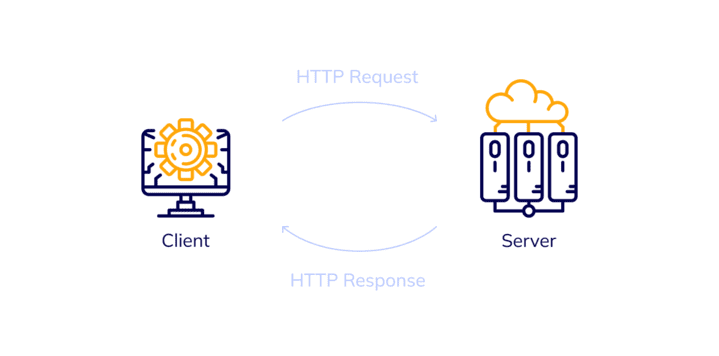
What is REST API
January 25, 2022What is the REST API?
REST, or Representational State Transfer, API is a client-service architecture that is based on a request/response design. REST APIs are primarily used to access and work with data.
How the REST API works?
The REST API works almost in the same way as any website. The call is made from the client to the server, and the data is received back via the HTTP protocol. You can also use them to provide means of accessing resources available on the server required for the client through the web browser by using request headers, request body, response body, status codes, etc.

HTTP Methods
HTTP methods or HTTP verbs form the main part of uniform interface constraint, followed by REST, which determines what actions have to be followed to get the requested resource.

GET, POST, PUT and DELETE methods can be used to perform CRUD operations like Create, Read, Update, Delete.

One of the major advantages of RESTs is that they provide lots of flexibility, allowing you to do more with that particular API. REST APIs are useful for:
- Cloud apps
REST APIs are useful in cloud apps because their calls have no static data. If something fails, components without static data can seamlessly redeploy and scale according to load changes.
- Cloud services
The REST API is also used in cloud services because you need to control how the URL is decoded to bind to the service via the API. However, cloud services and microservices are bound to make RESTful APIs the rule of the future.

- Web use
Since REST is not tied to client-side technology, you can access these APIs from a client-side web project, IoT device, or iOS App. You can build the infrastructure for your company without worrying about being tied to a specific client-side technology stack.
Best REST Clients and Testing Tools
Swagger is an API testing tool that allows users to start their functional, security, and performance testing right from the Open API Specifications. Some pros:
- Supports API documentation, development, design, and testing.
- Swagger offers many open source features for the OpenAPI specification.
With Postman, you can monitor the API, create automated tests, perform debugging, and run requests. Some pros:
- Smooth automated testing.
- Co-working features for easy sharing and management.
- Supports Swagger and RAML files.
Katalon Studio provides a common place to create and perform API/Web services, UI functional, and mobile testing. Some pros:
- Has one of the most secure assertion libraries.
- It’s a complete package and framework.
- Supports a data-driven approach.
Karate DSL is a framework for automating API, Performance, and Load testing that has its scripting language – Domain Specific Language (DSL). This framework runs on Java and uses the Apache HTTP client to make HTTP connections. Some pros:
- Built-in support for JavaScript and JSON objects
- Very powerful JSON schema assertion and validation.
- Parallel execution.
- Integration with Gatling for Performance testing.
